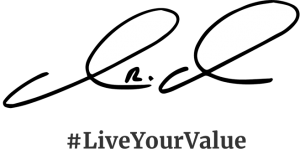Calcium is one of the many minerals our body needs to carry out some important life functions including the development and maintenance of our bones and teeth. We all know how important it is for growing children to satisfying the need for calcium. But it is also important to continue to get enough calcium as an adult in order to maintain the structure and strength of our frame.
Calcium (along with a few other important minerals such as phosphorus, potassium, magnesium, sulfur, sodium, and chloride) helps maintain the PH balance of the body, move nutrients across cell membranes, and maintain proper impulses that nerve cells use to send signals throughout the body, which improves cognitive functioning in our youth and as we age. Believe it or not, almost everyone gets enough calcium. However, what many are missing are the cofactors that allow the body to properly absorb and distribute it throughout the body.
There are seven major cofactors that impact the body’s ability to perform this task:
- Digestion– Our body cannot make minerals. We must ingest them by eating a colorful diet of leafy greens, broccoli, dried apricots, figs, nut, and seeds. We can eat our daily allowance without the need for supplements. Calcium needs HCL (stomach acid) to be absorbed. This is required for the uptake of the mineral.
- Fatty Acids- Fatty acids are necessary for the transport of calcium across the cell membrane into the cell where this mineral can begin to work its magic. Getting good fats like fish oils, coconut oil, grass-fed butter, beef tallow, and responsibly sourced duck fat also increases the amount of calcium in tissues such as the heart, insuring a steady heart rate.
- Vitamin D- We need vitamin D to increase the absorption of calcium in the small intestine. Vitamin D is also a fat-soluble vitamin, so those with IBS may experience difficulty acquiring this nutrient and may require additional supplements for conjugating fats. The list of foods naturally occurring in nature with vitamin D is rather short: flesh from fatty fish (tuna, salmon, mackerel) and fish liver oils are the best sources. It is also possible to consume small amounts from beef liver, cheese, and eggs. However, this varies depending on how these animals were raised and harvested. Quality is a discerning factor when assessing nutrient content. My favorite way to get vitamin D is to go outside and get 15-30 minutes of morning sun on my face, arms, legs, and back. Research has shown that 15-30 minutes of sun exposure without sunscreen will usually lead to sufficient vitamin D synthesis. If you have limited sun exposure you will need to add a good vitamin D supplement to your daily routine.
- Other Minerals- For our calcium level to stay balanced we must also get a daily supply of other minerals/microminerals in our diet. Potassium and the trace elements Manganese, Boron, Copper, and Zinc are all important for the body to be able to use calcium to perform functions.
- Systemic PH- The body will protect its blood supply first, so if our blood becomes too acidic and its PH falls, it pulls calcium out of the bones to buffer the blood. On the reverse, if the blood is alkaline, calcium separates and may be redeposited inappropriately causing issues, usually in the joints.
- Good Hydration- Good hydration ensures that the blood stays fluid and calcium is transported throughout the body to other tissues. Getting a balanced electrolyte intake allows for the transfer of calcium in and out of the cell.
- Hormones- Hormones distributed by the endocrine system from the Parathyroid, Thyroid, Adrenals, and Sex organs all play a part in regulating calcium. This brings us back to fatty acids. We need the consumption of good fats to build healthy nerve pathways and regulate hormones.
Is Dairy a Good Source of Calcium?
Eating a calcium-rich diet has been confused with drinking lots of milk. However, this theory poses health risks and concerns for many of us. The quality of dairy we are consuming is a major factor as well as our potential compromised digestive system that may not be able to digest lactose. Thankfully, it is easy to eat a calcium-rich diet without going overboard on dairy. Just add a few of these staples to your diet a few days a week:
- Swiss, Jack or Cheddar Cheese (2 oz)
- Goat’s Milk Yogurt (2 oz)
- Broccoli (2 stalks)
- Sardines w/bones (2 oz)
- Collard and Turnip greens (6 oz)
- Almonds and Brazil nuts (3 oz)
Furthermore, as I mentioned earlier, we need to get a variety of minerals in our diets. Thus, adding foods high in Magnesium is also a good idea.
Foods high in Magnesium include:
- Avocados
- Bananas
- Pumpkins Seeds
- Brown Rice
- Beans
- Salmon
- Black and Kidney Beans
- Nut Butters
- Legumes
- Tofu
- Spinach
- Cashews
Many of these amazing foods check off boxes in several categories. They include good fats, antioxidants, and protein, which are all part of a healthy diet. Keeping variety in your diet is a key component to a healthy, sustainable lifestyle.
I hope this helps you better understand why we need calcium and how you can get it. Remember to Live Your Value, one nutritional choice at a time!










